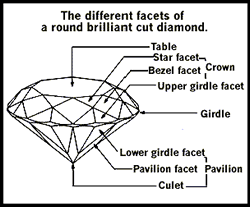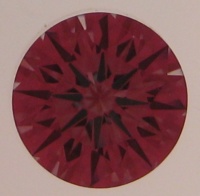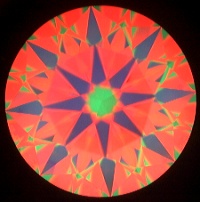Correct me if I’m wrong, but no Australian diamond grading lab lists either the star length or lower half length on their certificates – something that both the GIA and AGS do on round brilliants.
The star facets (eight of them on a round brilliant) surround the table, as shown below:

The “star length” is expressed as the percentage of the total length of the star and upper girdle facets. Therefore, a 50% star length would mean in theory, the star and upper girdle facets are of the same length.
The “lower half” or “lower girdle facet percentage” refers to how far the lower girdle facets go down the pavillion. This is also expressed as a percentage. For example, a percentage of 75% would mean that the lower girdle facets extend 75% of the way down the pavilion. Shorter lower girdle facets also mean they are wider.
Traditionally, “diamantaires” only looked at the table and depth percentages. Nowadays, people are also looking at crown and pavilion angles. However, discerning diamond consumers are now looking at the whole diamond – not just the certificate.
The reason why lower girdle and star facets are important is that they define the contrast pattern on a well cut diamond. Granted, on a poorly cut diamond they won’t make much difference, but as we can see from the Ideal-Scope images below, they greatly affect the arrows pattern:


Both diamonds have similar proportions, however, the diamond on the right has a GIA graded lower half length of 85% (probably around 83%), whilst the diamond on the right, a Crossfire Hearts and Arrows diamond has an AGS graded lower half length of 75%. As you can see, the width of the arrows vary greatly, thus affecting the face up appearance of each diamond.
Another aspect that both the GIA and AGS pick up on is girdle painting, which the stone on the left “suffers” from. The GIA will mention “Cut grade affected by brillianteering”, whilst the AGS will lower the contrast score.
Now I may be being too picky, but wouldn’t giving these numbers on certs greatly benefit the end consumer?